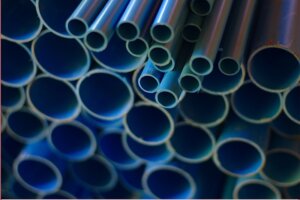Give us a call today: 613 791 5777 for a free upfront estimate!
 If you are working a project that requires using materials like PVC pipe, there is no surprise then when the time comes for you to cut the pipe to ensure proper fit. The chief advantages of relying on the use of PVC for your home project is that the material is readily cut to just about any size you require. What’s more, many different tools exist, all of which you can use to cut the material and this certainly simplifies the project.
If you are working a project that requires using materials like PVC pipe, there is no surprise then when the time comes for you to cut the pipe to ensure proper fit. The chief advantages of relying on the use of PVC for your home project is that the material is readily cut to just about any size you require. What’s more, many different tools exist, all of which you can use to cut the material and this certainly simplifies the project.
There’s no need to make this project more complex than it is; no fancy getups or expensive tools are necessary when you’re using a quality product like PVC: This is two additional advantages you gain from relying on the material. Another advantage of PVC is the sheer affordability of material proving far less expensive than alternative materials such as copper. The only tools you will require to complete the project might include things like a miter saw, pipe cutters, and the appropriately chosen hacksaw. With a few tools at arm’s length, you will have the project completed in no time.
Using a Hacksaw on PVC Material
Before you can use a hacksaw safely to cut PVC material, you will need to position the material/piping into a vise which is solidly positioned and screwed to a workbench. The hacksaw is the primary tool used to cut PVC pipe as well as other pipe materials. By positioning the pipe in a vise, you are ensuring that the pipe will not slip away as you attempt to cut it and this helps to reduce the potential for personal injury. Putting the pipe in a vice is always advised as is taking all other necessary precautions to ensure your safety and the safety of others.
Using a permanent black marker, draw a black line where you plan to cut the pipe and allow a few seconds for the ink to dry: This is important when you draw on PVC material as doing this will allow you to prevent from smearing the line you just drew on to the pipe. The PVC material has a very smooth surface so the marker line will go on with a wet appearance but within a matter of a few seconds to a minute or so, the ink will go from appearing wet and shiny to a matte appearance. You can easily remove the dried marker from the PVC material with a cotton ball and a bit of rubbing alcohol.
Take up the hacksaw and position the toothed edge along the black line you just created. Just make sure you have a solid grip on the handle of your cutting tool before you begin. Your free hand should then be used to put pressure on the top of the hacksaw by pushing down on the tool thereby allowing the teeth to seat into the PVC pipe. Make sure you start sawing in the appropriate position as this will make sure that you can make the best swipes with the hacksaw.
Keep firm pressure as you are using the hacksaw on the pipe. Make sure you stay close to the marked line that you created and do not drift from it. Keep sufficient speed to keep the cutting action going but also be careful not to go so quickly that the teeth of the hacksaw jump over the line with your cutting. Thankfully, PVC material is relatively easy to cut through so it shouldn’t take long to complete the task.
Using A Miter Saw to Cut PVC Material
If you must make detailed cuts into the PVC material than you will use a miter saw for the job. You want to get a saw that has the correct tooth count for the cutting task at hand. If you’re not sure what count to use, a good standard to go by is the 10 tooth per inch, also referred to as TPI wood blade, and you will find that this standard option is usually included with most of the miter saws you purchase.
Of course, ultimately what you get with the miter saw depends on the style of the saw and the brand purchased. You will find these miter boxes very simple to use because they come was pre-marked cut lines along the edge of the box and, therefore, you will be less likely to make a mistake when making a cut. Again, you want to secure the PVC material in a clamp device to keep it positioned firmly as you cut it.
Using a medium speed, you’ll approach the PVC material with the blade of your tool. After cutting the material, it is a matter of a repeat process and finishing of the task by making any other necessary cuts that you require.
Using a Plastic Pipe Cutter for Cutting PVC Material
When you want to use a PVC pipe cutter you have two options including the scissor style cutter and the ratcheting style cutter. If you have PVC pipe material that is 1/2 inch to 1 inch in thickness the scissor style pipe cutters are usually ideal. There are instances however when we will find that scissor cutters don’t necessarily work as well as ratcheting cutters. When it comes to the latter type of cutter this is the tool that works best for the bigger and thicker PVC pipes.
You will find ratcheting style PVC cutters are dependable and safer. To use the cutter, you’ll need to position the PVC pipe in the half-moon slot located on the cutters lower portion. A ratcheting style pipe cutter has a special edge that is rounded and opened: This is where you position the pipe. There also an extended blade that you control by squeezing a special trigger located on the handle device. Before you begin, you must indicate where you want to cut the PVC pipe by making a mark. Then all you must do is position the pipe within the mouth of the cutter so that you can begin the cutting process.
You will need to ratchet the blade correctly down onto the PVC material. Once in position, you can use the handgrip trigger to activate the blade and the pipe gets cut in half. While you are doing this, make sure to use your free hand to steady the pipe as you make the cut. Again, the cutting PVC material is quite easy.
If you are unsure on how to cut pipe or would rather let the professionals handle the job for you, we highly recommend that you call on the professionals of Dr. Pipe Drain and Plumbing Services. They have worked with Ottawa homeowners for a long time and understand the needs of each client.
Give us a call today: 613 791 5777 for a free upfront estimate!




